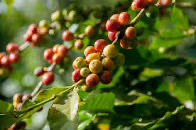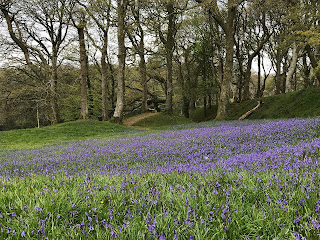I have been debating what to write for the blog this week. For the last couple of weeks, I have given you a taster of pieces I have been researching. I am actively looking for markets to pitch those ideas.
Productivity has been a little bit down this week, but no matter as things are ramping up towards the Ottery Literary Festival in October. I have a copy date coming up in the next few weeks. Everything is ready, and the final touches are needed. Thanks to the authors for their cooperation in completing the feature.
I now have nearly 15k words in my novel, Scrivener file. I need to program in time to get more words into it regularly. For the first time, I feel this work in progress of many years is getting somewhere.
William Gallagher is a writer and scriptwriter who I follow over on YouTube. His 58keys channel is a mine of information for writing on all things Apple. There is also advice on productivity and the apps available to help the writer achieve their aims. William is someone that understands the trials and tribulations that writers have to live through. I am currently reading his book 'The Blank Screen - productivity for creative writers'. It is exciting reading. William writes from vast experience as a writer and scriptwriter. As one of the screenwriters for the Dr Who radio series on the BBC, William is now heavily involved with the Writers’ Guild of Great Britain and has been its Deputy Chair.
William writes for his blog every Friday, and it is always a fascinating read. He is a great fan of writing early in the mornings and is up and writing around 0500 each morning. Writing early in the mornings is something I like to do; saying that, though, I’m writing this at half-past ten on a Friday night, listening to Billie Eilish at Glastonbury! I had a week when I got up an hour earlier than needed and came down and wrote. I take my MacBook Air M1 to work with me, and I try to write during my half-hour lunch break, something that doesn’t always happen. I programmed into the calendar app what I wished to do each morning, and I have to admit that my word count was up, and I achieved a few pieces that needed completing. It is me, then, who has to sort myself out to do this. The process works; therefore, I have to stop procrastinating and get on with it.
Another interesting point that William makes is about the use of social media. He believes that social media is not a tool for writers and keeps much of his Facebook and Twitter feeds for those he knows personally. William doesn’t use these platforms to promote his work. Yes, he has a YouTube channel, but it is more like his work in that it is akin to the talks and workshops he undertakes, and his channel certainly kept writers going during the lockdowns. It is an interesting, if not challenging, view to take. I have come across many others who say that using social media platforms is vital for writers, and I can see writers all over Twitter and Facebook promoting their work. Indeed I have read in one of the magazines that I subscribe to that some agents and editors actively want a writer to have a 35 to 40k following on socials before they take writers on. If I am honest, I can see both sides of this debate and probably lean towards Williams’ viewpoint. I can highly recommend William’s book.
I am getting more focused on my writing. It is a passion for me, and I would love to have the time and an office to write for eight hours a day and make a bit of a living from it. In late 2019, I outlined some writing goals for the year ahead. The aim was to get to my 60th birthday and be able to step back from full-time work and concentrate on writing. Sadly, as we all know, many of our life goals had to take a back seat during 20 and 21. Now that things are a bit clearer in 2022, I am starting to get back on track. I wouldn’t wish to make any rash promises, but I am planning for a few years ahead, depending on the country’s state.
As this week’s post ends, I’m now thinking of what to write for next week’s post. The first of next week’s writing-related tasks must be to come up with a list of topics for the next few weeks. I can have a look through a couple of my ideas gathering apps!
Links:
YouTube - https://youtu.be/cSaB5X67Zm8






